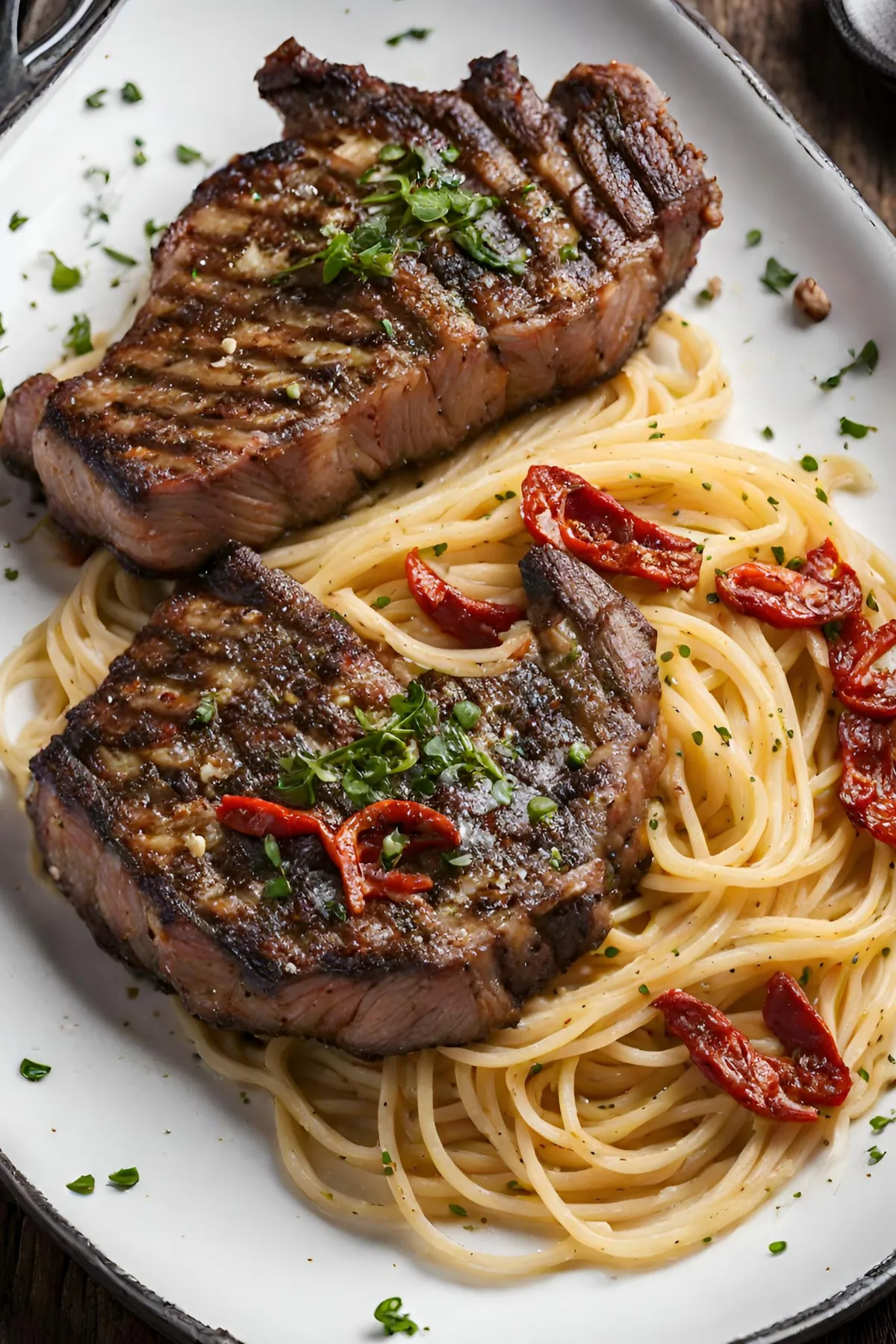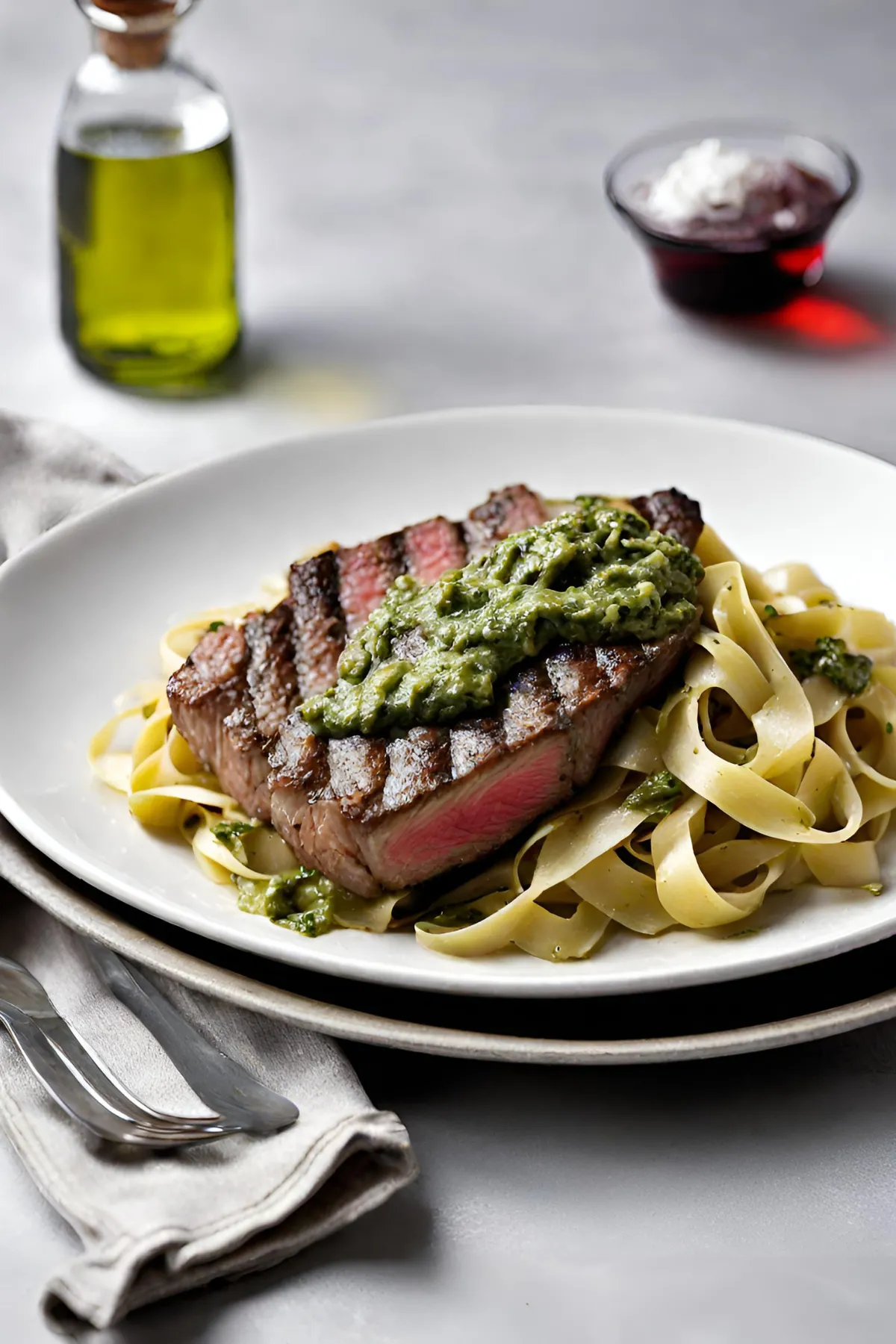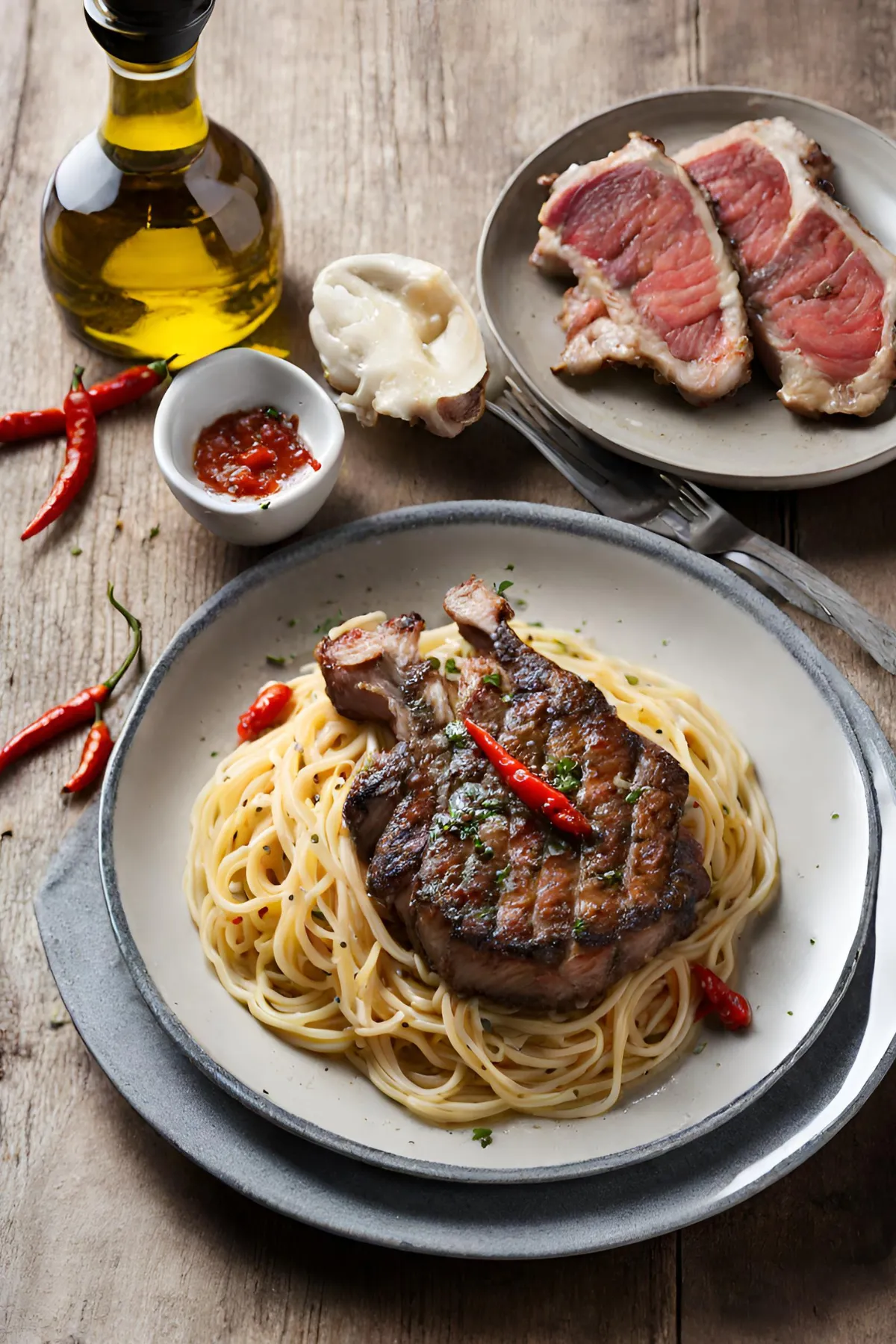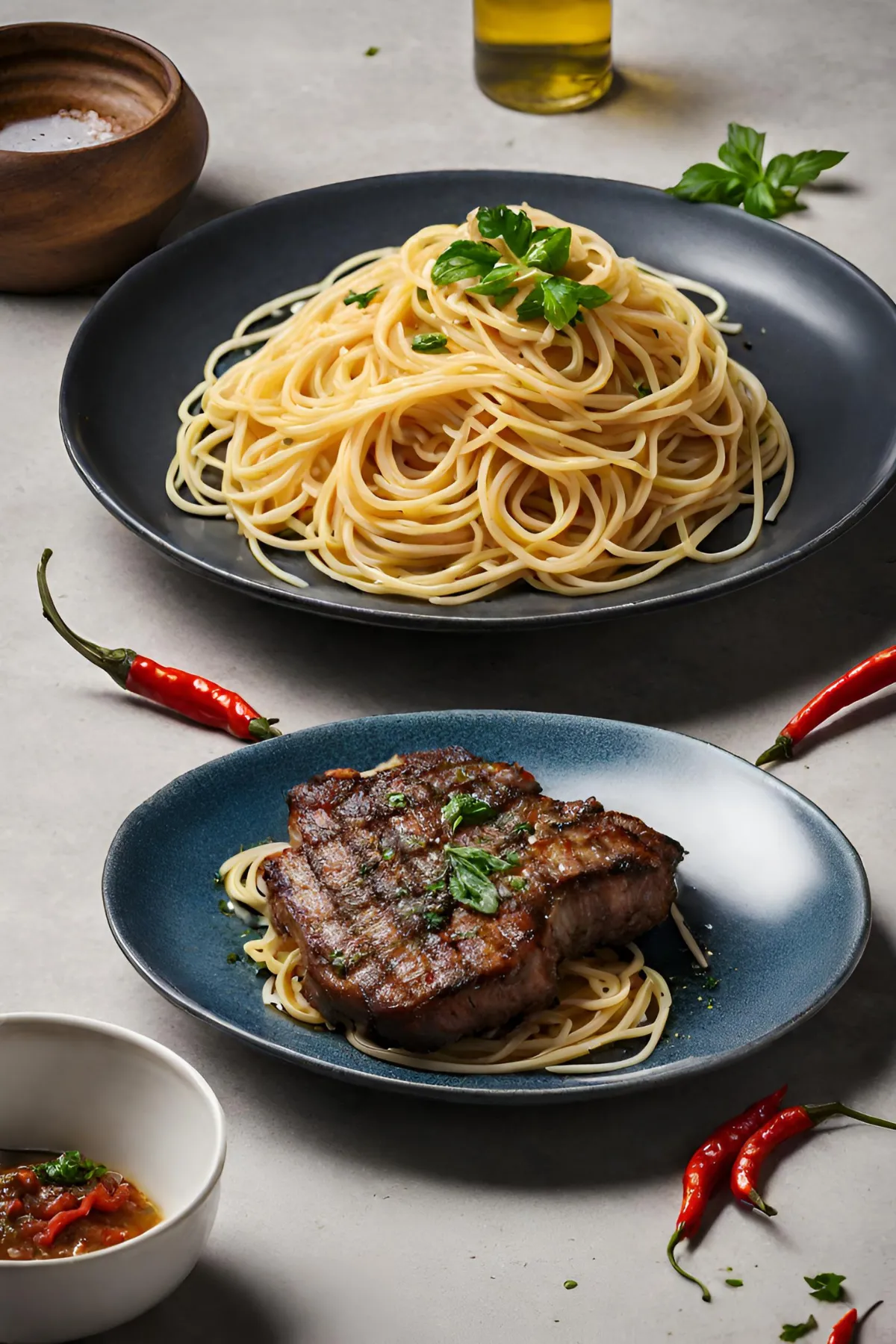The Ultimate Guide to Italian Steak and Pasta Recipes
Italian cuisine is celebrated worldwide for its bold flavors, simple yet sophisticated techniques, and the unparalleled quality of its ingredients. Among the myriad of dishes Italy offers, steak and pasta stand out for their versatility and popularity. This article delves into the art of preparing these staples, offering insights into traditional recipes, cooking tips, and modern twists on classic dishes.
Introduction to Italian Cuisine
The history of Italian cuisine is as rich and diverse as the country’s cultural heritage. From the rolling hills of Tuscany to the bustling streets of Rome, each region boasts its own unique flavors and cooking methods. Central to Italian cooking is the use of fresh, high-quality ingredients – a testament to the country’s rich agricultural landscape.
Combining the hearty richness of steak with the versatile elegance of pasta, creates a symphony of flavors that epitomizes the essence of Italian dining. Whether it’s a robust Bistecca alla Fiorentina or a delicate plate of Spaghetti Aglio Olio, these dishes offer a glimpse into Italy’s culinary soul.
Italian Steak Recipes
Italian cuisine is renowned for its diverse range of flavors, techniques, and ingredients, reflecting the rich cultural heritage of its various regions. Among the plethora of Italian dishes, steak holds a special place, showcasing the simplicity and depth of Italian cooking. The art of preparing Italian steak revolves around three primary techniques: grilling, pan-searing, and broiling, each method bringing out the unique qualities and flavors of the meat.
Overview of Italian Steak Cooking Techniques
- Grilling is perhaps the most traditional method, especially for preparing the iconic Bistecca alla Fiorentina. This technique involves cooking the steak over an open flame, allowing the high heat to sear the exterior while keeping the interior juicy and tender. The key to perfect grilling lies in the quality of the meat and the heat of the grill; a thick-cut T-bone steak, preferably from Chianina cattle, grilled over a wood fire, embodies the true essence of Tuscan cuisine.
- Pan-searing is another beloved technique in Italian kitchens, ideal for cooking Tagliata. This method involves cooking the steak in a very hot pan, creating a caramelized crust on the outside while maintaining a succulent interior. The steak is then sliced thinly and often served over a bed of fresh arugula, dressed with olive oil, balsamic vinegar, and shavings of Parmigiano-Reggiano, highlighting the steak’s rich flavors with a balance of peppery and tangy notes.
- Broiling offers a quick and efficient way to cook steak, especially in urban settings where grilling might not be an option. This method cooks the steak with high heat from above, simulating the effects of grilling, and is excellent for achieving a charred exterior with a tender, cooked interior. While not as traditional as grilling, broiling is a testament to the adaptability of Italian cooking to modern lifestyles.
Popular Italian Steak Dishes
- Bistecca alla Fiorentina is a hallmark of Tuscan cuisine, celebrated for its simplicity and the exceptional quality of its ingredients. This dish is more than just a meal; it’s a cultural icon, representing the heart of Tuscan culinary tradition. The steak is seasoned minimally with salt and sometimes black pepper, then grilled to perfection, offering a taste of Italy in every bite.
- Tagliata, meaning “cut” in Italian, presents a more modern interpretation of steak. It’s typically a sirloin or ribeye steak, cooked whole, then sliced and served over arugula. The dish captures the modern Italian ethos of simplicity in cooking, focusing on high-quality ingredients and straightforward techniques to produce a dish that’s both elegant and deeply flavorful.
Italian steak dishes, from the rustic charm of Bistecca alla Fiorentina to the refined simplicity of Tagliata, showcase the breadth and depth of Italy’s culinary heritage. Through the use of traditional cooking methods and a focus on quality ingredients, these dishes offer a window into the soul of Italian cuisine, inviting diners to savor the rich flavors and traditions of Italy.
Italian Pasta Recipes
Italian pasta is a testament to the ingenuity and diversity of Italy’s culinary traditions. With over 300 shapes and an infinite variety of sauces, pasta dishes offer a canvas for creativity and flavor. Understanding the harmony between pasta shapes and sauces is crucial, as each shape is designed to complement specific types of sauces, ensuring every bite is a perfect melding of textures and tastes.
Understanding Pasta Shapes and Sauces
The art of matching pasta shapes with the right sauces is rooted in centuries of culinary tradition. Long, thin pastas like spaghetti and linguine are best paired with light, olive oil-based sauces or seafood, allowing the sauce to cling to the strands. Short, tubular pastas such as penne and rigatoni are ideal for thicker, meatier sauces, their hollow centers capturing the sauce. Delicate shapes like farfalle and shells pair well with creamier sauces, offering a balance of texture and flavor.
Highlight on Signature Pasta Dishes
- Trofie al Pesto from Liguria: This dish celebrates the vibrant, fresh flavors of Liguria. Trofie, short, twisted pasta, is traditionally served with pesto Genovese, a basil-based sauce that clings beautifully to the pasta’s crevices. The combination of fresh basil, pine nuts, Parmesan cheese, garlic, and extra virgin olive oil creates a rich, aromatic sauce that embodies the essence of the Italian Riviera.
- Spaghetti Aglio Olio e Peperoncino from Campania: A testament to the beauty of simplicity, this dish features spaghetti tossed with a minimalistic sauce made from garlic (aglio), olive oil (olio), and red chili peppers (peperoncino). Originating from Campania, it showcases how a few quality ingredients can create a flavorful and satisfying meal.
- Pici all’Aglione from Toscana: Pici, a thick, hand-rolled pasta similar to spaghetti but more robust, serves as the foundation for the all’aglione sauce, a hearty, garlicky tomato sauce. This dish from Tuscany is a celebration of rustic flavors, combining the heartiness of the pasta with the boldness of the sauce.
- Lasagne alla Bolognese from Emilia-Romagna: Representing the rich culinary tradition of Emilia-Romagna, lasagne alla Bolognese layers delicate sheets of egg pasta with a hearty Bolognese ragù, creamy béchamel sauce, and Parmigiano-Reggiano cheese. It’s a complex dish that showcases the depth of flavors and textures achievable in Italian cuisine.
Italian pasta dishes are a reflection of the country’s regional diversity, with each recipe telling a story of its origin. From the pesto-covered hills of Liguria to the rich, meaty traditions of Emilia-Romagna, pasta in Italy is not just food; it’s a cultural heritage, celebrated and savored in every bite.
Combining Steak with Pasta
In the world of culinary arts, combining steak with pasta is a creative endeavor that marries the robust flavors of meat with the comforting texture of pasta. This fusion creates dishes that are both hearty and sophisticated, offering a gourmet experience that delights the palate. Below are two inventive recipes that blend the richness of steak with classic pasta in a way that pays homage to Italian culinary traditions while introducing a modern twist.
Recipe 1: Steak Tagliatelle in Creamy Mushroom Sauce
Ingredients:
- 1 lb Tagliatelle pasta
- 2 Ribeye steaks (about 1-inch thick)
- Salt and freshly ground black pepper, to taste
- 2 tablespoons olive oil
- 2 cups sliced mushrooms (cremini or button)
- 1 small onion, finely chopped
- 2 cloves garlic, minced
- 1 cup heavy cream
- 1/2 cup grated Parmesan cheese
- Fresh parsley, chopped (for garnish)
Instructions:
- Prepare the Pasta: Cook the tagliatelle according to package instructions until al dente. Drain and set aside, reserving a cup of pasta water.
- Cook the Steak: Season the ribeye steaks with salt and pepper. Heat a skillet over medium-high heat and add 1 tablespoon of olive oil. Sear the steaks for about 4-5 minutes per side for medium-rare, or until desired doneness. Remove from the skillet and let rest.
- Make the Sauce: In the same skillet, add the remaining olive oil. Sauté the onions and garlic until translucent. Add the mushrooms and cook until they are soft and browned. Deglaze the pan with a splash of pasta water, scraping up any browned bits.
- Combine: Lower the heat to medium-low and stir in the heavy cream. Simmer for a few minutes until the sauce thickens slightly. Stir in the Parmesan cheese until melted and smooth. If the sauce is too thick, adjust the consistency with the reserved pasta water.
- Assemble: Slice the rested steak against the grain. Toss the cooked pasta into the creamy mushroom sauce, ensuring each strand is well-coated. Serve the pasta with sliced steak on top, garnished with fresh parsley.
Recipe 2: Grilled Ribeye over Pesto Pasta
Ingredients:
- 1 lb spaghetti or linguine
- 2 Ribeye steaks
- Salt and freshly ground black pepper, to taste
- 1 cup homemade or store-bought pesto
- 1/4 cup toasted pine nuts
- Fresh basil leaves, for garnish
- Grated Parmesan cheese, for serving
Instructions:
- Grill the Steak: Preheat your grill to high. Season the ribeye steaks generously with salt and pepper. Grill for 4-5 minutes on each side for medium-rare, or until desired doneness. Let them rest.
- Cook the Pasta: Meanwhile, cook the pasta in a large pot of salted boiling water according to package instructions until al dente. Drain, reserving a cup of the pasta cooking water.
- Toss with Pesto: Return the pasta to the pot. Add the pesto and toss until the pasta is evenly coated, adding a little pasta water if needed to loosen the sauce.
- Serve: Slice the rested steaks thinly. Plate the pesto pasta and top with sliced steak. Garnish with toasted pine nuts, fresh basil leaves, and a sprinkle of grated Parmesan cheese.
These recipes showcase the versatility of combining steak with pasta, creating dishes that are suitable for a cozy family dinner or a sophisticated gathering. The key to success lies in balancing flavors and textures, ensuring that each component shines in the final dish.
Cooking Tips and Techniques
Achieving the perfect Italian dish requires attention to detail, from selecting the best ingredients to mastering cooking techniques.
- Selecting Ingredients: Opt for fresh, high-quality ingredients to elevate your dishes. The right cut of steak and the freshest pasta make all the difference.
- Cooking Pasta: Aim for al dente texture by following package instructions and tasting the pasta towards the end of cooking time.
- Perfect Steak: Understanding the preferred doneness and allowing the steak to rest before serving are crucial for a tender, juicy result.
FAQs
- What are the best pasta shapes to pair with steak? – Short, robust pasta like pappardelle or tagliatelle works well with steak.
- How can I make my steak and pasta dish authentically Italian? – Focus on quality ingredients and simplicity, letting the natural flavors shine.
- Can I use chicken or seafood instead of steak in these recipes? – Absolutely! Italian cuisine is all about adaptation and using what’s fresh and available.
For those interested in creating a menu that captures the essence of Italian dining, TouchBistro’s guide to Creating Your Italian Restaurant Menu offers valuable insights into menu design and dish selection.
Embracing the art of Italian cooking means engaging with the culture’s deep-rooted love for food, where every meal is an opportunity to gather, celebrate, and enjoy the simple pleasures of life. Buon appetito!
You can read these articles too
Italian Chicken Cutlets Recipe
Print
Bistecca alla Fiorentina with Tagliatelle al Pesto
- Author: Lily
- Total Time: 1 hr
- Yield: 4 servings
Description
A classic Tuscan T-bone steak paired with homemade pesto tagliatelle, combining the robust flavors of grilled steak with the freshness of basil pesto.
Ingredients
- For Steak: 1 T-bone steak, olive oil, salt, black pepper
- For Pasta: Tagliatelle, fresh basil leaves, pine nuts, Parmesan cheese, garlic, olive oil
Instructions
Season steak and grill to desired doneness. Blend basil, pine nuts, Parmesan, garlic, and oil for pesto. Cook pasta, toss with pesto.
Notes
Let steak rest before slicing. Use high-quality olive oil for the pesto.
- Prep Time: 20 mins
- Cook Time: 40 mins
- Category: Main Course
- Method: Grilling, Boiling
- Cuisine: Italian
Nutrition
- Calories: 650
- Fat: 35g
- Carbohydrates: 45g
- Protein: 40g

Spaghetti Aglio Olio e Peperoncino with Seared Ribeye
- Author: Lily
- Total Time: 40 mins
- Yield: 4 servings
Description
A spicy and aromatic pasta dish paired with a perfectly seared ribeye steak, capturing the essence of Italian simplicity and flavor.
Ingredients
- For Pasta: Spaghetti, extra virgin olive oil, garlic, red chili flakes, parsley
- For Steak: Ribeye steak, salt, black pepper, olive oil
Instructions
Cook spaghetti al dente. Sauté garlic and chili in olive oil, toss with pasta. Season steak, sear on high heat to desired doneness.
Notes
Adjust chili flakes to taste. Let steak rest before serving.
- Prep Time: 10 mins
- Cook Time: 30 mins
- Category: Main Course
- Method: Searing, Boiling
- Cuisine: Italian
Nutrition
- Calories: 580
- Fat: 32g
- Carbohydrates: 47g
- Protein: 36g






